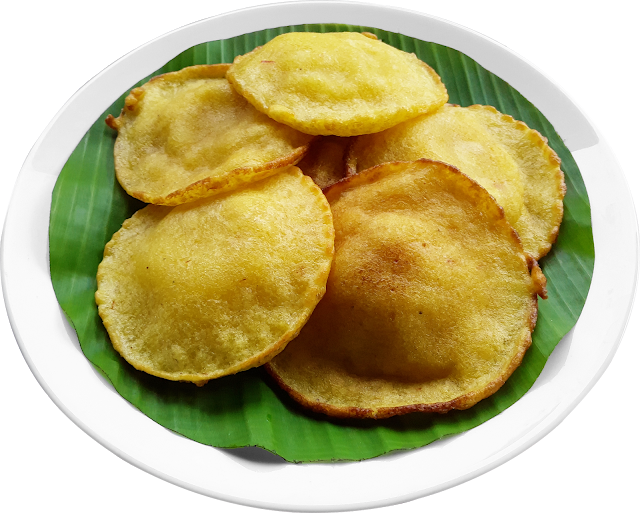MALPURI
A DELICIOUS, SWEET, FRAGRANT KONKANI DEEP-FRIED DESSERT
Ingredients:
1) Bombay rava
(fine wheat semolina) – 400 gm.
2) Maida
(white wheat flour / all-purpose flour) – 100 gm.
3) Sugar – 250
gm.
4) Milk – 500
ml.
5) Water – 500
ml.
6) Cardamom
pods – 6 Nos.
7) Saffron – 2
pinches
8) Oil to deep
fry (cooking oil / ghee / hydrogenated vegetable oil) – 500 ml.
9) Powdered
sugar for dusting (optional) – 100 gm.
To prepare:
Put a thick
bottomed pan on medium heat. Tip in the rava. Stir continuously so that the
rava heats up without browning or burning in the least. As soon as the rava is
uniformly hot, switch off the heat (there is no need to roast the rava, but
only to heat it up so that the puris become soft and fluffy without adding any
baking powder or other raising agent).
Crush the cardamom and transfer to
a mixing bowl. Tip in the maida, the heated rava, the sugar, the saffron, the
milk and the water. Use a blender to beat the mixture thoroughly (or just grind
it for 10 seconds in your food processor). Let the batter rest for 4 hours.
To make:
Set a deep,
thick cast-iron wok or non-stick wok on high heat. Pour in the cooking oil. Use
a ladle (of 125 ml. capacity) to stir the batter thoroughly. As soon as the oil
is hot (it should not smoke), stir the batter and pour a ladleful in the
center. The malpuri will rise beautifully.
Use a
perforated spatula to splash the hot oil carefully over the risen puri. Once it
rises fully, gently flip it over. A minute later, turn down the heat a bit and
lift out the puri. Drain off the excess oil. Deep-fry the rest of the malpuris
likewise, taking care to stir the batter each time. You may have to adjust the
heat to keep the oil from overheating.
Serve warm or
cold. They are equally delicious either way and taste even better the second
day.
Enjoy!!!
Notes:
1)
I have used
just enough sugar in the batter for the perfect mildly sweet taste and softness
so that you can enjoy many many more puris. If you like them sweeter, please
dust the powdered sugar over the hot puris and enjoy!
2)
If you like
to have a crispy golden frill around your malpuri, just add half a cup more
water to the batter. The thinner batter makes thinner puris.
3)
The most
important ingredient in malpuri which lends it its golden colour, richness and
aroma is saffron. Take care to use original good quality saffron since
duplicate shredded coloured paper saffron is plentiful in the market.























